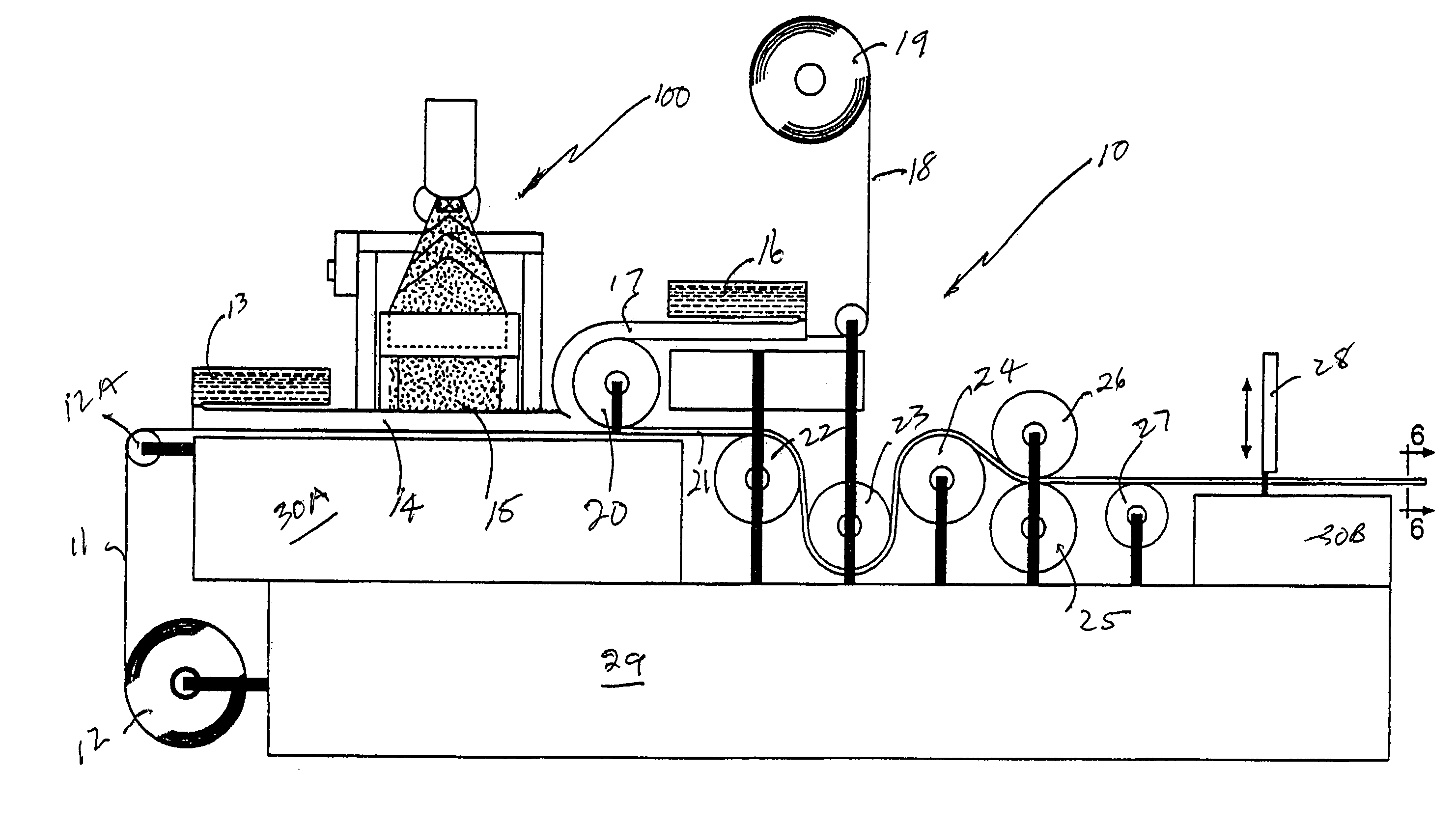Biocomposites sheet molding and methods of making those
a technology of biocomposites and sheet molding, which is applied in the field of sheet molding compounds, can solve the problems of biocomposites derived from natural fibers and petroleum-based thermoplastics or thermosets that are not fully environmentally friendly, biocomposites have not been produced commercially using a sheet molding compound (smc) process line, and the industrial process for producing sheet molding compound (biocomposites) is not available, so as to achieve the effect of minimal degradation of biofiber properties
- Summary
- Abstract
- Description
- Claims
- Application Information
AI Technical Summary
Benefits of technology
Problems solved by technology
Method used
Image
Examples
example 1
[0073]Experiments were done with glass fibers to ensure that the composites developed using SMC process had consistent properties. An unsaturated polyester resin compatible glass roving, Owens Corning 985, was used for making composites. Other glass fibers like Owens Corning 485, and other sized glass fibers were not compatible with polyester resin. The major goal of the run was to produce 0.188 thick SMC using Owens Corning 985 E-glass and then to compression mold the resultant sheet material. The resulting glass composites were of the following composition: glass fibers 30 wt %, CaCO3 42 wt %, and UPE 28 wt %.
[0074]The runs were conducted using the following parameters:[0075]Line speed—Dial setting of 1.5, about 0.3 in / sec[0076]Glass cutter—Dial setting of 3.2, approx. 223 g / min (31% by weight)[0077]Four tows were fed into a glass cutter to improve glass distribution[0078]Cutter Pressure—40 psi[0079]Idler roll pressure—56 psi[0080]Wipe blade gap height upper—0.060″[0081]Wipe blade...
example 2
[0096]Experiments were performed to produce biocomposites using the SMC line. The major goal of these runs was to produce sheet material using natural fibers as the reinforcement.
[0097]The natural fibers were vacuum dried overnight at 80° C. and −102 kPa, before being used in the bio-composite fabrication. Some composites were made with untreated fibers as such, and some were made with chemically treated fibers. In particular, silane treatment was used on big blue stem grass and green flax core. The silane treatment of these fibers was done in the following way:[0098]A 1% methacryloxypropyltrimethoxy silane (γ-MPS) solution was made in 99% DI water and Ethanol (1:1) while maintaining the pH of the solution at 4.0 by using 2% Glacial Acetic Acid. The silane solution was hydrolyzed for 2 hours by continuously stirring using a magnetic stir bar. The fibers were soaked in this solution for 1 hour. The solution was then drained from the fibers, and they were dried under a hood for at lea...
PUM
| Property | Measurement | Unit |
|---|---|---|
| length | aaaaa | aaaaa |
| length | aaaaa | aaaaa |
| size | aaaaa | aaaaa |
Abstract
Description
Claims
Application Information
 Login to View More
Login to View More - R&D
- Intellectual Property
- Life Sciences
- Materials
- Tech Scout
- Unparalleled Data Quality
- Higher Quality Content
- 60% Fewer Hallucinations
Browse by: Latest US Patents, China's latest patents, Technical Efficacy Thesaurus, Application Domain, Technology Topic, Popular Technical Reports.
© 2025 PatSnap. All rights reserved.Legal|Privacy policy|Modern Slavery Act Transparency Statement|Sitemap|About US| Contact US: help@patsnap.com



